Scottish Terrier Dog Breed
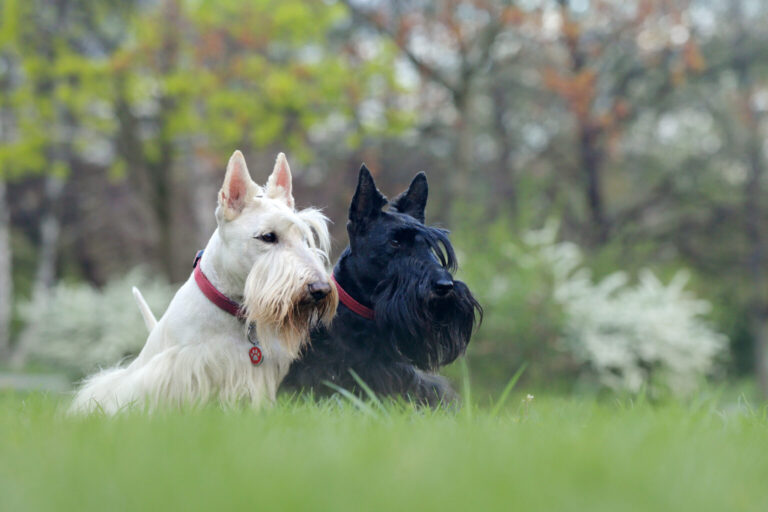
| Feature | Details |
|---|---|
| Country of Origin | Scotland |
| Birth Era | 18th Century |
| Crossbreeding Status | Purebred |
| Temperament | Feisty, Independent, Loyal, Affectionate |
| Physique | Small, Sturdy, Muscular |
| Hair Quality | Double coat – Soft undercoat, Wiry outer coat |
| Lifespan | 12-15 years |
The Scottish Terrier is known for its distinctive appearance and personality. Originating from Scotland, this breed has a history as a hunting dog, particularly skilled in ratting. Despite its compact size, the Scottish Terrier is very brave and has a strong independent streak. Its coat is hard and typically black, brindle, or wheaten in color. The breed’s distinctive look includes erect ears, a bearded face, and short legs. The Scottish Terrier has a loyal yet stubborn temperament, forming strong bonds with its owner. With adequate exercise and consistent training, it makes a wonderful family pet.

In Japan, the Scottish Terrier is admired for its dignified appearance and loyal nature, reflecting the Japanese values of respect and loyalty in relationships.
Coat Color
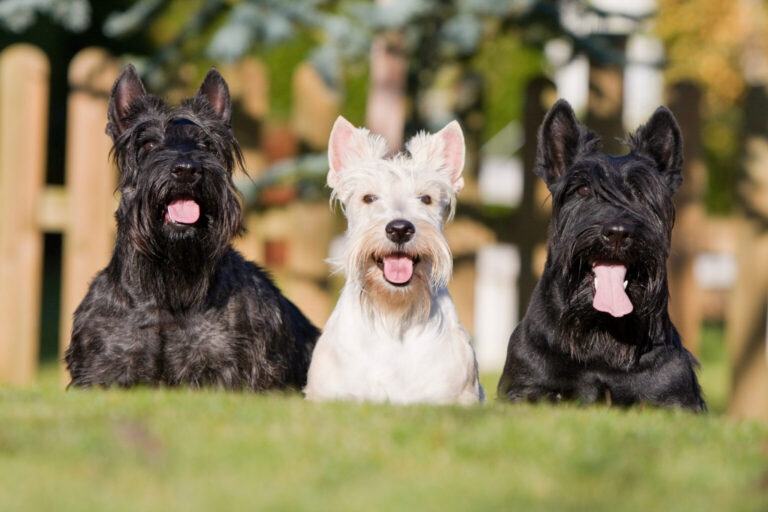
Scottish Terriers are renowned for their distinctive coat colors, which significantly add to their charm. The most prevalent colors include a deep, jet black, a unique wheaten shade, and various brindles. These colors are more than just aesthetic; they are indicative of the breed’s purity and heritage. Interestingly, the color of a Scottish Terrier can evolve over time. For instance, black-coated Scottish Terriers often develop gray fur around their muzzle and paws as they age, adding to their distinguished appearance.
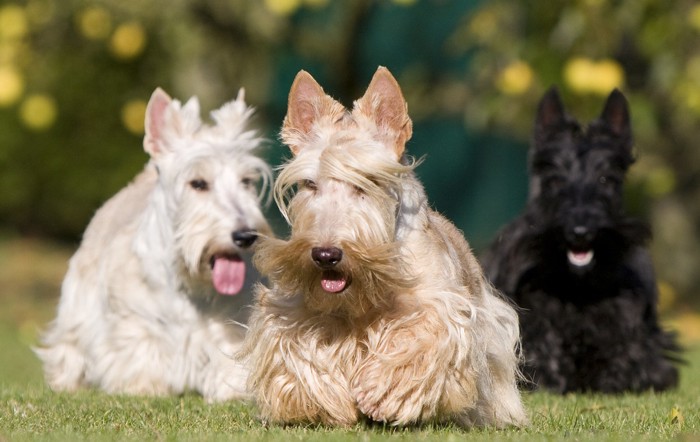
The variety in coat colors of Scottish Terriers is often compared to the diversity and richness of traditional Japanese art.
Coat Type
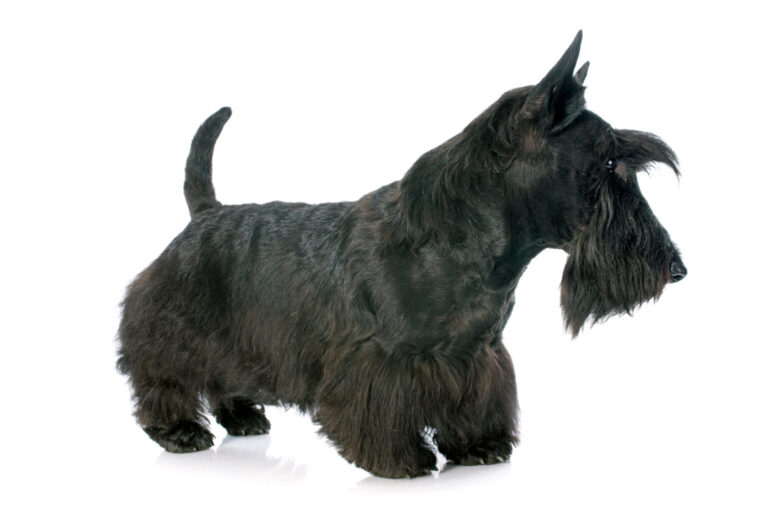
The Scottish Terrier’s double coat is a defining feature, consisting of a soft, thick undercoat and a coarse, wiry outer coat. This specialized coat not only provides excellent insulation against harsh weather but also plays a crucial role in protecting the dog from the elements and underbrush. Maintaining this coat requires consistent care, including regular brushing to avoid matting and professional grooming to keep the coat in good condition. The hypoallergenic nature of their coat is also a significant advantage for owners who suffer from allergies.
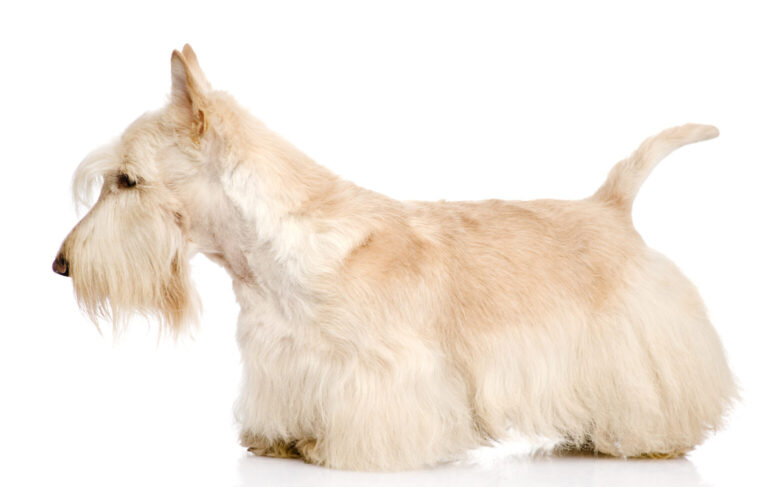
The thick, wiry coat of the Scottish Terrier is reminiscent of the durability and practicality valued in Japanese craftsmanship.
Size

The Scottish Terrier’s size is a perfect blend of compactness and strength. Standing at about 10 inches at the shoulder, they exhibit a robust and muscular build, belying their small stature. This size is incredibly versatile, making them equally suitable for apartment living and homes with more space. Their agility and quickness, key traits for their historical role as hunters, are also enhanced by their compact size.
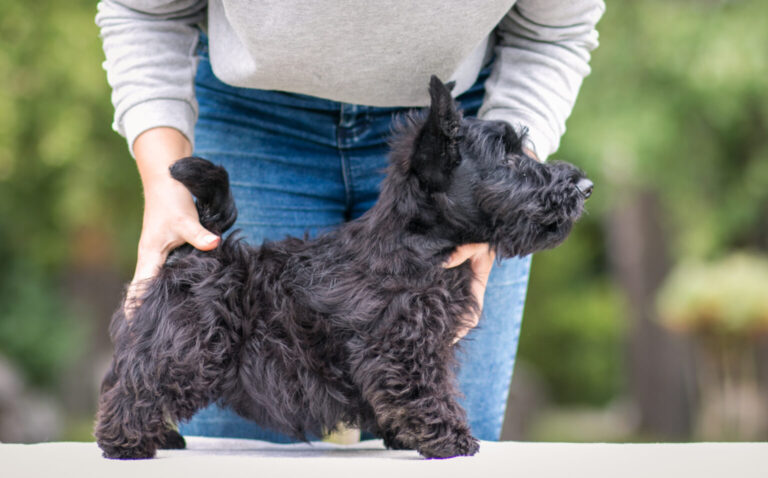
The compact size of the Scottish Terrier suits the typically smaller living spaces in Japan, symbolizing the efficient use of space in Japanese culture.
Weight

Typically, a Scottish Terrier weighs between 18 to 22 pounds, with males generally on the higher end of this scale. This weight contributes to their sturdy and muscular physique. It is crucial for owners to monitor their Scottish Terrier’s weight closely, as maintaining an appropriate weight is vital for their overall health. Diet and exercise play a key role in preventing obesity, which can lead to various health issues in this breed.
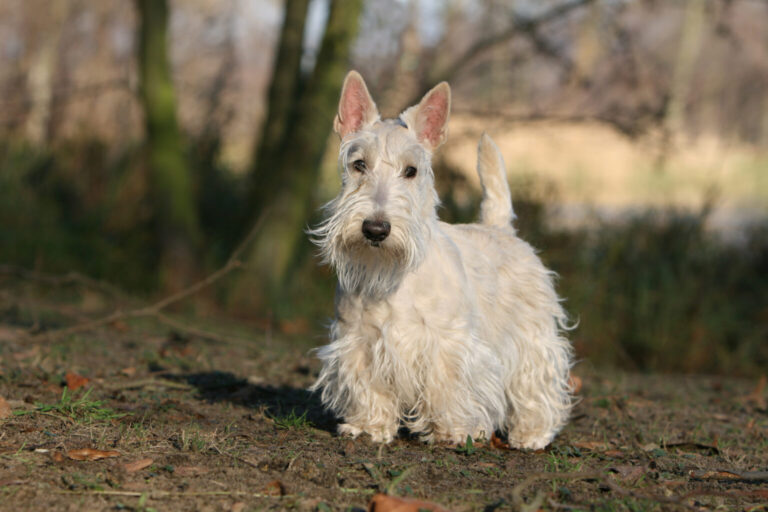
The moderate weight of the Scottish Terrier aligns with the Japanese preference for balance and harmony in all aspects of life.
Lifespan
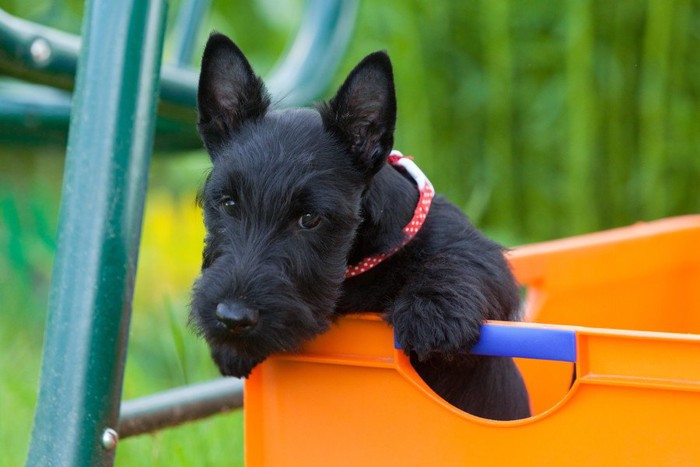
Scottish Terriers generally enjoy a lifespan of 12 to 15 years, influenced by factors like genetics, diet, and exercise, along with regular veterinary care. To ensure a long and healthy life, it’s important for owners to provide balanced nutrition, regular exercise, and routine health check-ups. Early detection of potential health issues through regular vet visits is crucial in extending their lifespan.

The long lifespan of Scottish Terriers is often seen as a reflection of Japan’s respect and care for the elderly, symbolizing longevity and health.
Trainability
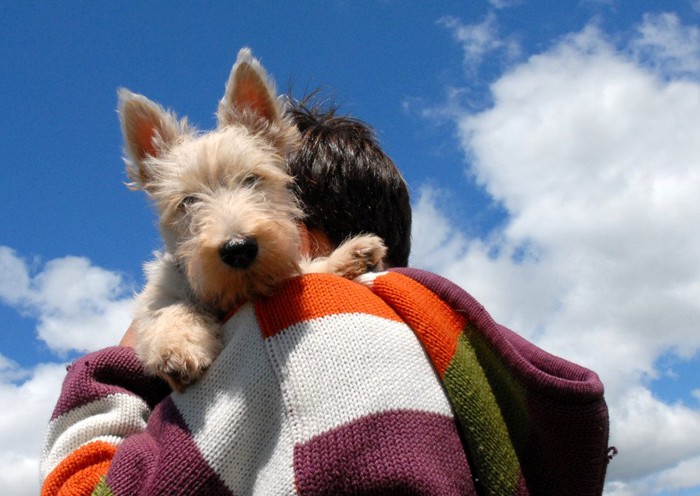
While intelligent, Scottish Terriers are also known for their independent nature, which can sometimes make training a challenge. They respond best to training that incorporates positive reinforcement and requires consistency and patience. Early socialization and obedience training are crucial in developing a well-behaved Scottish Terrier. Despite the potential challenges, their intelligence makes them capable of learning a wide array of commands and tricks.
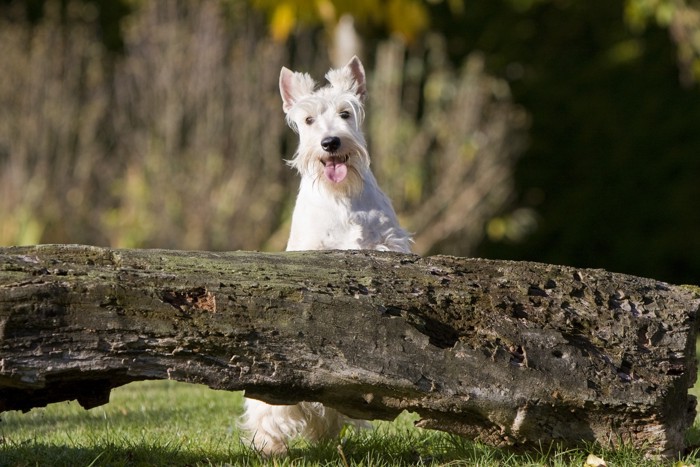
Scottish Terriers, known for their intelligence and independence, mirror the Japanese emphasis on education and self-reliance.
Exercise
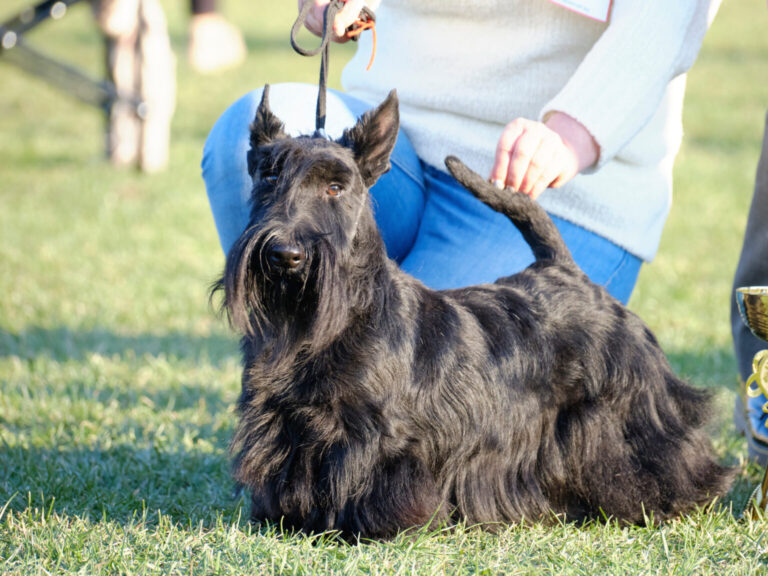
Scottish Terriers need regular exercise to maintain their health and to prevent boredom and behavioral issues. Daily walks, combined with playtime, are usually sufficient to meet their exercise needs. Activities that engage their natural hunting instincts, such as chasing balls or interactive play, are particularly beneficial. Given their terrier background, it’s important to keep them on a leash or in a secured area during outdoor activities to prevent them from chasing after small animals.
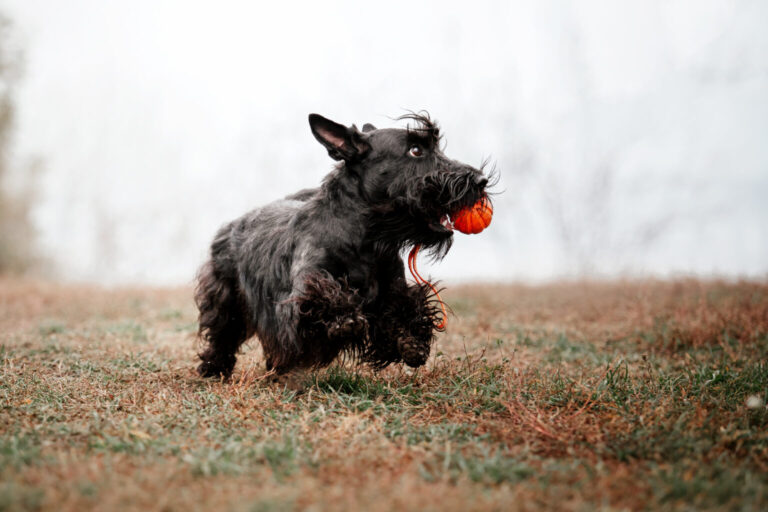
Their need for regular exercise resonates with the Japanese value of maintaining physical health and balance.
Feeding

Proper nutrition is vital for the Scottish Terrier’s health. Feeding them high-quality dog food suitable for their age, size, and activity level is recommended. Portion control is essential to avoid overfeeding, and treats should be given sparingly. Constant access to fresh water is a must. Consulting a veterinarian can provide tailored dietary advice to meet the specific needs of individual dogs.

Feeding practices for Scottish Terriers in Japan often incorporate local, natural ingredients, reflecting the Japanese focus on quality and naturalness in food.
Temperament

The Scottish Terrier is characterized by a feisty and independent temperament. They are fiercely loyal and affectionate with their families, though they may be aloof with strangers. Their bold and tenacious nature, which made them excellent hunters, is still evident today. Early and consistent socialization is key to ensuring they grow into well-adjusted, sociable adults.
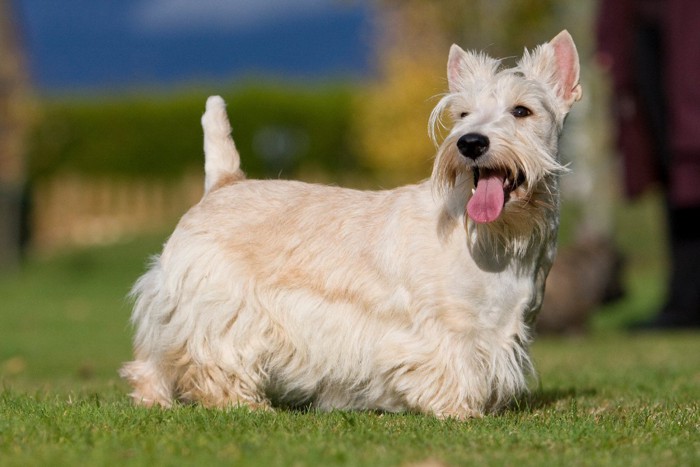
The Scottish Terrier’s bold and faithful temperament is greatly admired in Japan, as it resonates with the cultural values of courage and fidelity.
History
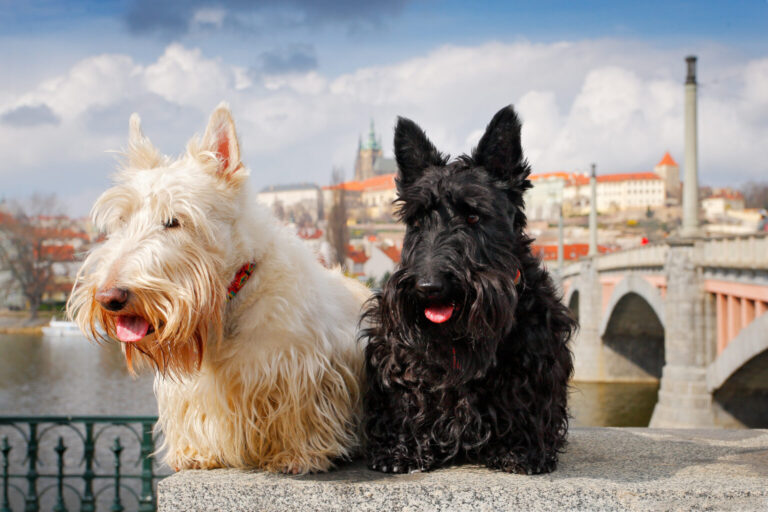
The Scottish Terrier has a rich history that traces back to 18th century Scotland, where they were originally bred for hunting small game and controlling vermin. Their small size enabled them to excel in this role, particularly in burrowing after their prey. The breed has played a significant role in the development of other terrier breeds and is a proud symbol of its Scottish origins. Their historical significance is further enhanced by their popularity among various historical figures.
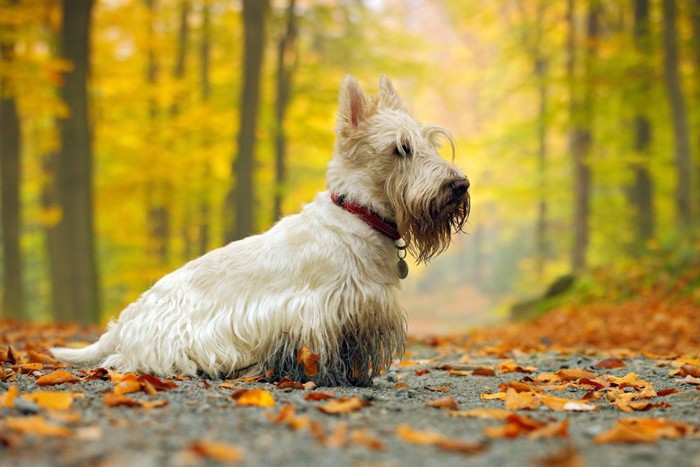
The rich history of the Scottish Terrier breed is appreciated in Japan, a country that deeply values and preserves its own historical heritage.
Grooming

Grooming is a critical aspect of caring for a Scottish Terrier. Regular brushing, bathing, and professional grooming are necessary to maintain their distinctive coat and prevent matting. This regimen should also include routine ear cleaning, nail trimming, and dental care. Regular grooming sessions also offer an opportunity to check for any signs of skin conditions or parasitic infections, ensuring the overall health of the dog.
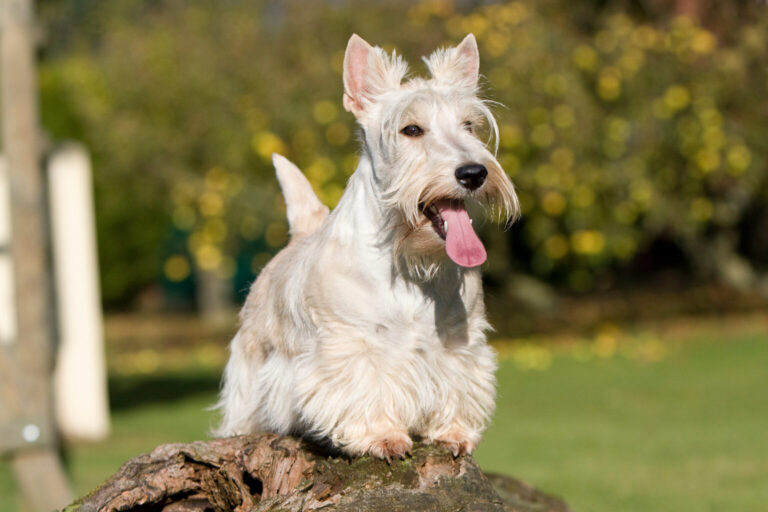
Grooming the Scottish Terrier is seen as a form of care and respect in Japan, reflecting the importance of cleanliness and aesthetics in Japanese culture.
Health

While generally healthy, Scottish Terriers are predisposed to certain health conditions, including Scottie Cramp, von Willebrand’s disease, and various cancers. Regular veterinary check-ups are crucial for early detection and treatment of these conditions. Responsible breeding practices, including health screenings for genetic disorders, can help reduce the risk of these issues. A proactive approach to health care can significantly contribute to the well-being and longevity of a Scottish Terrier.

In Japan, the health of Scottish Terriers is a priority, mirroring the national emphasis on healthcare and preventive measures for a healthy life.

